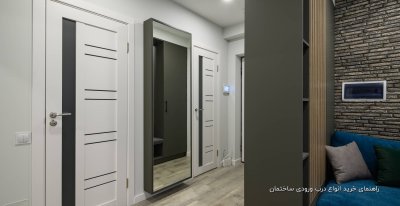Farrokh
Active Member

CGSociety Production Coverage

Luma Pictures brings together 125 shots for latest X-Men epic.
Monday, 04 May 2009 When X-Men Origins: Wolverine thunders to its conclusion, it does so with all of the fury and firepower one would expect from the year's most anticipated superhero blockbuster.

The film's climax is a VFX tour-de-force, and much of the juice is supplied courtesy of Luma Pictures. The Californian visual effects studio created 125 visual effects shots for the film, the lion's share of which appear in the concluding "Aftermath" sequence. Luma created the CG environment where the scene takes place, which is a destroyed nuclear reactor and its environs, as well as the huge assortment of dust, debris and other atmospherics that accompanies the mayhem. Most significantly, its team of animators produced photo-real CG doubles for several of the film's mutant cast, including Victor Creed (Sabretooth), as well as Wolverine's adamantium claws. Luma completed all this work in just seven weeks.

In creating the 3D environment representing the smashed nuclear facility, Luma went to great lengths to make the scene look real. "We flew a crew to Sacramento to photograph decommissioned cooling towers and industrial complexes as reference for our 3D replicas," recalls Luma VFX supervisor Vince Cirelli. "We also analyzed reference material of large structures that had been demolished to better understand how certain building materials fracture under stress. Those elements helped us to create a believable, post-apocalyptic environment that provides the stage for the final minutes of the film."

Luma Pictures has a stellar reputation for CG characters and doubles, through its work on such films as ‘Underworld: Evolution’, ‘City of Ember’ and ‘Primeval’, but the short deadline for Wolverine posed a unique challenge. While Luma usually produces CG characters in a modular manner to provide maximum flexibility for lighting and environmental conditions, that simply wasn't possible in this case.
"As we had just five weeks to finalize photo-real humans, we decided to build the characters for the shots," explains Cirelli. "The lighting was developed for the shots and texture artists worked inside of the lighter's scene files to tweak shaders and balance textures so that they could be exported as the hero asset and rendered. This method allowed us to render photo-real humanoids that held up close to camera in just a few weeks."

For the Aftermath sequence actors were shot on green screen and were then integrated into multiple 3D environments. Luma artists had to make subtle adjustments to the lighting, shading and color tones of the real actors to ensure they reflected the light from the digital environments.
"It required articulate rotoscoping and various keying techniques to skew the tonal range; a delicate balance that, if not handled correctly, could have made the actors look processed or compy," Cirelli notes. "As a further complication, the 3D environment into which the actors were being comped was going through continual refinement through to the very end."

The complexity of the shots, with their multitude of live and digital elements, made it difficult to maintain visual continuity. Luma produced a number of "tent-pole" composites to provide a reference for color, lighting and shading values, but as the sequence was constantly evolving, there was a repeated need to refine the look. "We were frequently required to apply significant changes across the entire sequence of 100-plus shots for the purpose of studio screenings," observes digital effects supervisor Justin Johnson.
"We met the challenge by relying heavily on Assimilate's Scratch playback and color grading system for real time adjustments during client review sessions," adds VFX producer Steve Griffith.
While the deadline pressure was daunting, Luma has developed its pipeline (which employs a mix of off-the-shelf and proprietary technology) to process extremely complex work with great efficiency. Additionally, the studio's staff was turned on by the opportunity to contribute to a critical sequence in a film that is sure to command a huge, worldwide audience. "Our entire staff rallied together," says senior VFX producer Steven Swanson. "Their grace under pressure, and the quality of the resulting work is a testament to the incredible talent and work ethic of our artists and managers."

Luma was accorded high marks by the production team for its ability to deliver under pressure. "It was a great experience for me working with the crew at Luma," said Craig Lyn, an additional visual effects supervisor on the film. "They're a talented and professional group who always strove to deliver what was asked...then busted their asses to do more."
Luma Pictures executive VFX supervisor Payam Shohadai was pleased by the effort put in by his team. "We garnered a lot of compliments for our workflow and for the work itself," Shohadai recalls. "The studio's appreciation of our flexibility and responsiveness has led to award of additional complex creature work for an upcoming Fox film." Luma is currently working on three more film projects, including the new Coen Brothers film ‘A Serious Man’ (Paramount Vantage).
Luma Pictures is a leading provider of visual effects services to Hollywood with a reputation for artistic integrity, technical innovation and efficient production. The company served as lead visual effects provider on multiple Academy Award Winner ‘No Country for Old Men’ (Paramount Vantage), as well as recent releases such as ‘Hancock’ (Columbia Pictures) and ‘City of Ember’ (Walden Media). Some of the studio's other credits include ‘Pirates of the Caribbean: At Worlds End’ (Walt Disney Pictures), ‘Apocalypto’ (Buena Vista/Icon), ‘Underworld 3’ (ScreenGems/Lakeshore), and ‘Burn After Reading’ (Focus Features).
منبع : features.cgsociety.org
لینک های مرتبط :
Luma Pictures
X-MenOrigins: Wolverine
Discuss this on CGTalk










